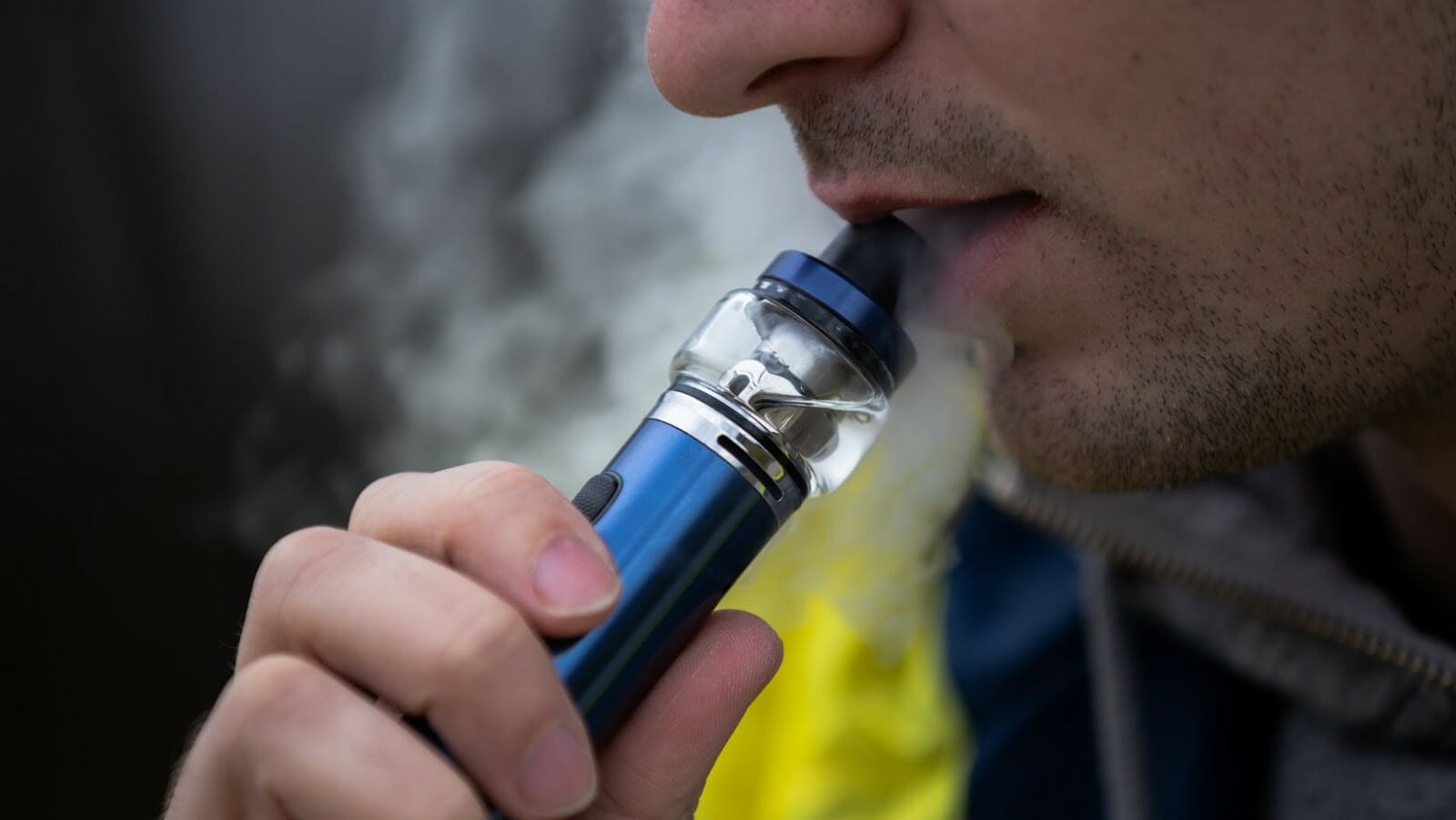Vaping is becoming increasingly popular around the world. But do you know how to make sure you’re vaping safely? In this article, we’ll explore the potential risks, as well as provide some tips on how to vape responsibly. You’ll be better informed and ready to start if you choose to join in on the vape trend.
Introduction to the Vape Trend
Vaping has seen a dramatic increase in popularity over the last few years, leading to a surge in the number of people who use electronic cigarettes and other vaping products. Vaping has become an alternative for those trying to quit smoking or just a way for people to enjoy flavored nicotine without using traditional cigarettes. But what really is vaping, and what do you need to know before giving it a try?
The term “vaping” comes from the act of inhaling and exhaling aerosol (or vapor) generated by an e-cigarette or vaping device. E-cigarettes are battery-powered devices that contain liquid solutions containing nicotine, flavorings, and other chemicals that are converted into an aerosol when heated. Vaping devices vary widely in size, shape, and components depending on the product purchased.
The main components of e-cigarettes are:
- Battery – provides power
- Atomizer – contains coil or coils that heat up the liquid when activated
- Cartridge or tank – holds liquid used for vaping
- Mouthpiece – where vapor enters the user’s mouth when inhaled
- The sensor detects when the user is inhaling
- Resistor – controls temperature within the atomizer
- Electronic control – regulates the flow of current
Whether you’re looking for an alternative to smoking traditional cigarettes or are simply curious about how it works, this guide will provide you with all the basics of vaping that you need to know before getting started.
Health Risks Associated with Vaping
Vaping has skyrocketed in popularity in recent years, especially among young adults. While vaping isn’t as harmful as smoking cigarettes, it still poses some health risks that ought to be taken into consideration. From nicotine-causing addiction to the potential compromise of the immune system, here are the risks associated with vaping.
Nicotine Addiction: According to research, the majority of e-cigarettes contain nicotine, which is a highly addictive drug and can lead to a dependency on the substance. It has been found that those who vaped regularly were more likely to have an addiction to nicotine than those who didn’t vape at all.
Cardiovascular Impact: Even short-term use of e-cigarettes has been linked with adverse effects on people’s cardiovascular system, including hypertension and changes in heart rate and blood pressure. This effect seems to be greater with higher volumes of usage.
Respiratory Issues: Long-term use or high doses of nicotine can cause irritation or inflammation in our airways, leading to throat irritation and/or coughing. Additionally, certain flavorings used for e-liquids, like diacetyl, could lead you at risk for severe lung disease if consumed over time or inhaled regularly enough.
Immune System Compromise: Nicotine itself is known for weakening our immune system and making us more vulnerable to sickness, so by consuming it through vaping, you are risking your overall health levels. Additionally, many vape pods don’t even list the ingredients on their packaging, which puts you at risk of consuming additional unknown hazardous chemicals trapped in vapor form inside your lungs over time.
Different Types of Vapes and E-Liquids
The world of vaping is ever-expanding, and there are now more devices and e-liquids available than ever before. To help you make sense of it all, here is a brief overview of the different types of vapes and e-liquids.
E-cigarettes: E-cigarettes, also known as ‘cigalikes’, are the simplest type of vape device and use a pre-filled cartridge which is typically activated by inhaling.
Vape Pens: Vape pens use thicker vapor than e-cigarettes and come in various sizes, shapes, and styles. Vape pens either have a ‘tank’ or cartridge system where you fill the tank with your favorite e-liquid or use disposable cartridges with pre-filled flavors.
Pod Systems: Pod systems are becoming increasingly popular because they are compact and easy to use. These systems work with small refillable cartridges that slot into the device rather than tanks filled with bottles of e-liquid. They also tend to be less powerful than vape pens or mods, making them an ideal starter kit for those just embarking on their vaping journey.
Mods: Mods are typically bigger in size than other types of vapes, though they can vary widely in design and shape. They offer greater battery life along with adjustable wattage settings so that users can customize their vaping experience. Mods often come with tanks, so you can fill them up using pre-filled containers or by pouring your favorite e-liquid flavors into them directly from a bottle or container.
E-Liquids: E-liquids can have a wide range of flavorings ranging from fruity to savory, intense to subtle, as well as varying strengths from low nicotine levels all the way up to high strength versions for those who prefer more intense nicotine hit in their vape clouds! There’s something for everyone, no matter what taste you prefer!
The Cost of Vaping
The cost of vaping can vary significantly, depending on the type of device, consumable products, and e-juices your purchase. Vape starter kits are usually the most cost-efficient way to begin vaping, as they often contain all the necessary components to get going.
While vape starter kits may initially seem less expensive than other options, this is often misleading. Depending on your usage and preferred nicotine strength, e-liquid refills can quickly add up. Refillable pod systems have been gaining in popularity due to their convenience, though these are often more costly refills for refills than standard electronic cigarette systems or open tank systems that require you to buy and replace coils with each replacement.

If you are a novice vaper uncertain about where or how much to invest at first, purchasing smaller quantities can be an excellent way of starting out until you’re familiar with what works for you. Smaller amounts also generally have a lower associated cost per unit than bulk orders can yield in some cases. Additionally, many online retailers provide discounts if you purchase their products online in bulk; however, investing only in what is necessary is always recommended when first starting out with any new hobby or emerging trend.
Social Impact of Vaping
As with any product, the social impact of vaping has been a topic of debate since its introduction to the market. Vaping has had both pros and cons related to its usage, ranging from perceived positive impacts, such as reducing smoking-related deaths, to negative impacts, such as increased chances of nicotine addiction or other ailments. To better understand the social consequences of vaping, let’s explore the different topics this trend raises and consider how it could affect society.
Health Effects: Although research into the long-term health effects of vaping is still ongoing, some studies suggest that the use of e-cigarettes may lead to an increase in nicotine addiction or other health risks such as cancer, stroke, heart attack, and lung disease. Other studies have found that because many vape devices usually contain nicotine and other harmful chemicals, users may be exposed to higher doses than traditional cigarette smokers–which could create a host of unknown long-term health effects.
Secondhand Vaping: Unlike secondhand smoke from cigarettes, which has been linked with some serious illnesses in non-smokers who are exposed to it over time, there is no significant evidence that secondhand vapor poses any risk to bystanders. However, this does not necessarily mean that secondhand vapor is harmless; more studies are needed in order to accurately assess these potential risks. Furthermore, recent developments in the field had challenged this view–notably the presence of formaldehyde being present at high doses when certain vape juices were heated—a finding which could raise some serious red flags about potential health implications for non-vapers as well.
Youth Involvement: Research suggests that youth are significantly more likely than adults to try e-cigarettes due to their appeal among people who are relatively new smokers or those who would otherwise not even smoke cigarettes at all–youths included! This poses a major problem for tobacco control efforts aiming at reducing cigarette smoking rates among young people; nonetheless, governments around the world have taken action against underage e-cigarette use through increasing age restrictions on sale and possession as well as heightened marketing regulations issued by regulatory bodies like FDA (U.S.) or MHRA (U.K.). However, these solutions alone may not be enough—especially since overall usage primarily relies on “suggested” policies with no solid enforcement mechanisms—and more drastic measures such as taxation or bans may be necessary if we want actual reductions in youth involvement with e-cigarettes.
Laws and Regulations Surrounding Vaping
As the popularity of vaping has increased, many states and local government authorities have turned their attention to regulating the industry. There is a wide range of laws, regulations, and guidelines that may apply to your location.
In certain states and cities, it is illegal to sell e-cigarettes to minors or use them anywhere traditional cigarettes are not allowed (e.g., inside restaurants or workplaces). Some states impose additional taxes on the sale of e-cigarettes, including excise taxes on all components (batteries, atomizers, tanks) of vaping devices. In addition, many state governments have laws that require childproofing for all vaping products.
It is important to be aware of current local regulations when using vaping devices in public areas, as it can be easy to violate laws without knowing them. Check with your local health department for the most up-to-date information on laws related to e-cigarette use in your state or city. For example, in California, it is illegal to smoke electronic cigarettes within 20 feet of a playground or public building entryways unless authorized by law or regulation.
Despite the growing number of regulations surrounding vape products, there are still discrepancies across locations due to political and social interests. Therefore, it’s best practice to stay knowledgeable about current restrictions in order to ensure you’re compliant with law enforcement agencies and public health regulations when enjoying your vape product in public spaces!
Tips for Vaping Safely
The vapors produced when vaping or inhaling a vaporized substance contain varying levels of toxins and particulate, depending on the ingredients. Therefore, it is important to be informed about the risks associated with vaping and to take the necessary steps to ensure your safety. Here are some tips for vaping safely:
-Research what’s in the liquid you’re using. Check for labels that provide more information about the ingredients, and don’t rely solely on what’s listed on the packaging.
-Check the wattage of your device. Many e-cigarettes have adjustable wattage settings allowing users to control how strongly they’re inhaling; higher wattage carries a greater risk of damage to the lungs due to higher temperatures of vaporization.
-Clean your device properly and regularly. This includes changing batteries regularly (vape batteries corrode much faster than other types), cleaning atomizers after every use, and replacing atomizers if need be.
-Limit nicotine intake when possible. Nicotine is a highly addictive substance that increases the risk of heart disease, stroke, and cancer if ingested in large doses.
-Start slow and work your way up gradually rather than jumping into intense vapor consumption all at once. Take regular breaks from vaping as well – a few minutes every 10–15 minutes can help stave off some of the negative effects associated with sustained heavy vapor consumption, such as dizziness and coughing fits, or chest pain
-Use caution when introducing new liquids or devices into your routine and be aware of any potential allergic reactions that could occur after extended usage – always read product labels carefully before buying anything new!
Conclusion
In conclusion, the trend of vaping is one that not only needs to be closely monitored by public health officials and by parents and caregivers too. There is a lot of evidence to suggest that vaping can have serious health risks, especially for young people. The health effects are still largely unknown and the marketing messages being spread about vaping are often manipulated to make it appear safer than it actually is.
Fortunately, there are many resources available for parents and caregivers who want to learn more about vaping so they can help protect their children or loved ones from harm. Parents should also talk openly with their children about the potential dangers of vaping, as well as the importance of understanding what they are inhaling. Additionally, it’s important to set limits on how much money can be spent and where e-cigarettes can be purchased. Such irresponsible decisions do not result in long-term harm or addiction.
By staying informed and actively participating in conversations with young people about vaping, parents and others can play an important role in reducing its harmful consequences.



